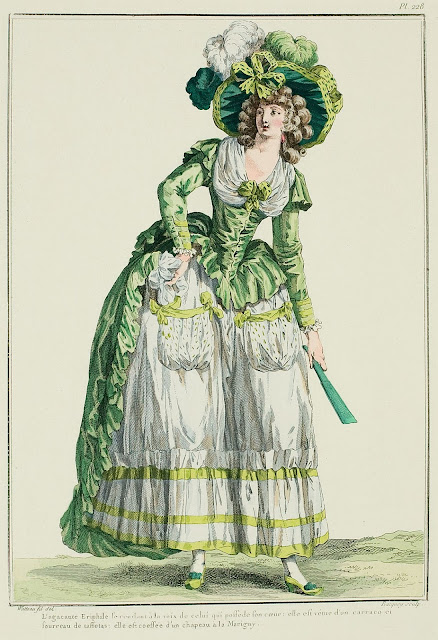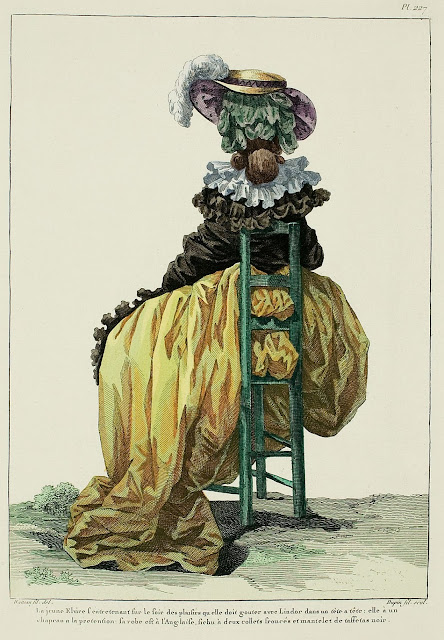Galerie des Modes, 51e Cahier, 5e Figure

Young Lady seated in a promenade; she is dressed in a robe à l'Anglaise edged à la Harpie, and coiffed with a straw hat edged the same way. 1. Baigneuse with a ribbon à la Harpie. 2. Straw hat, streaked ribbon and plain ribbon, laurel garland. (1786) "Many hats are made today, with gauze and fine muslins, or fine batistes, or fine crêpes, on which are embroidered different little wildflowers, like the cornflower, the daisy, the poppy, etc.: in observing, however, these brocaded gauzes are only for the crown or cap, the brims are of gaze reine .*" Le Magasin des Modes , 1787 * See Caroline Weber again.



















